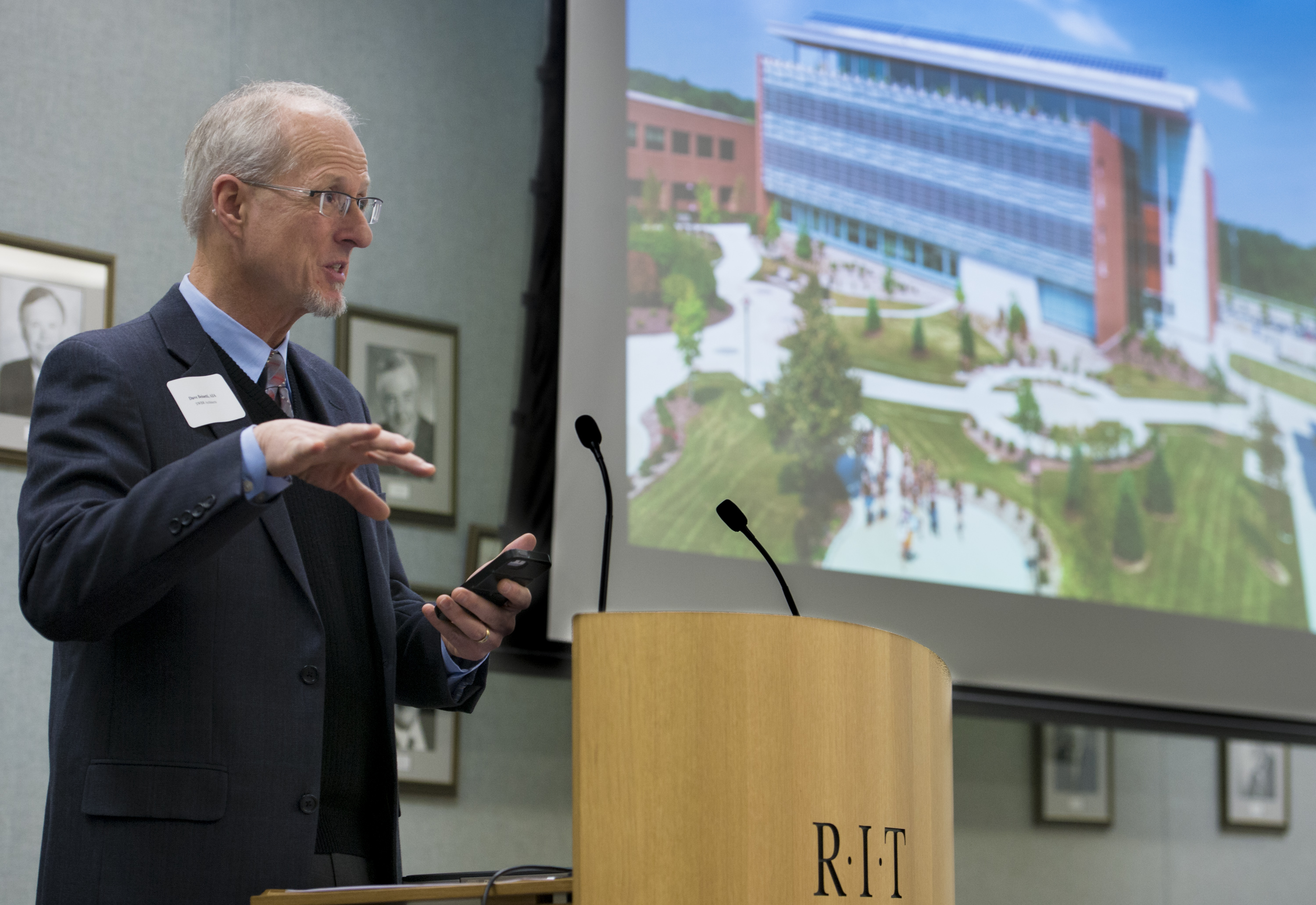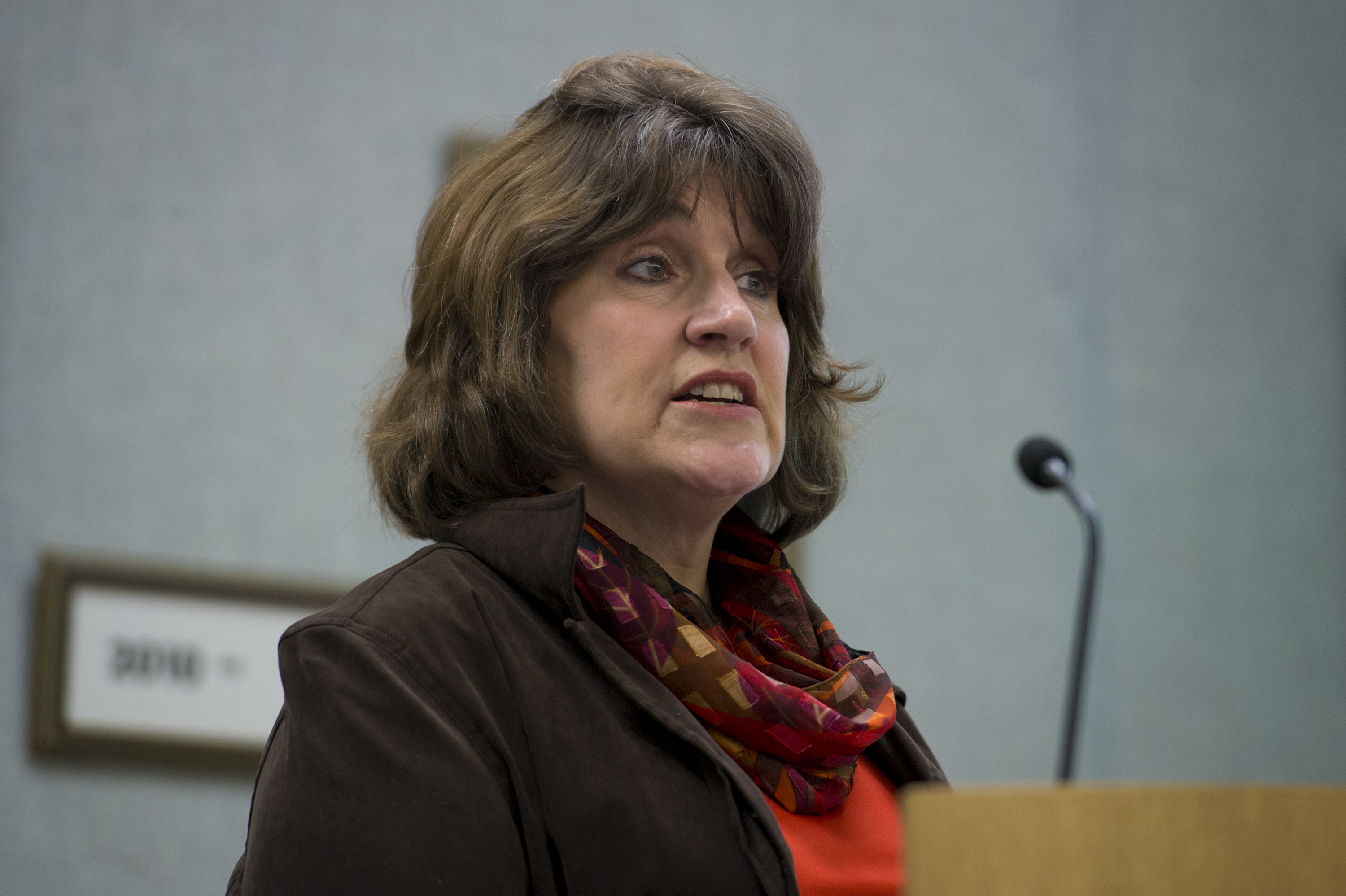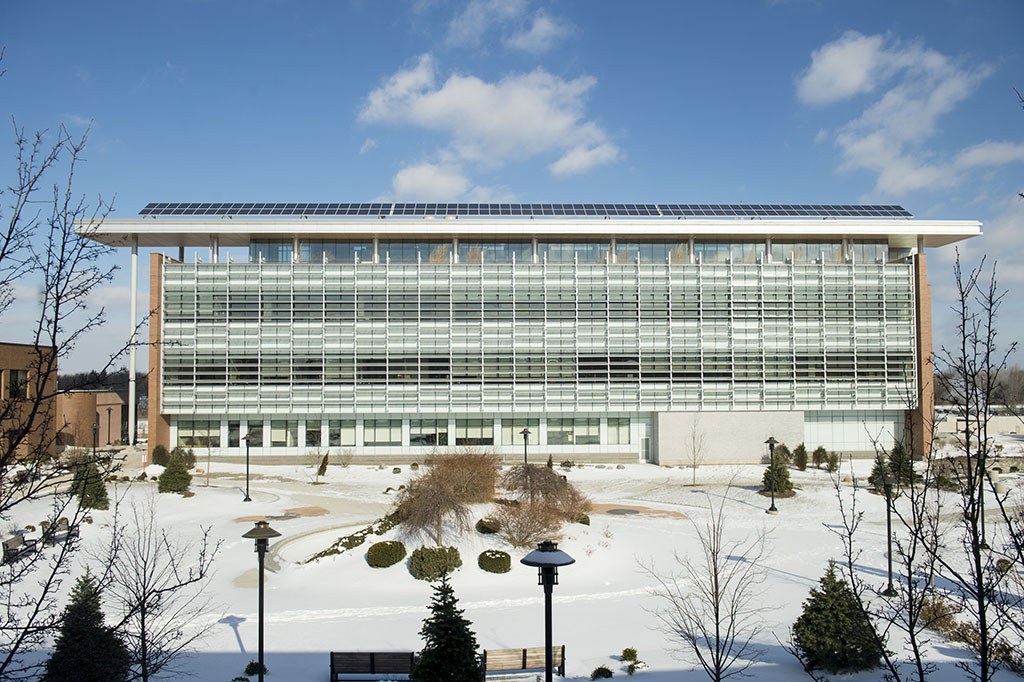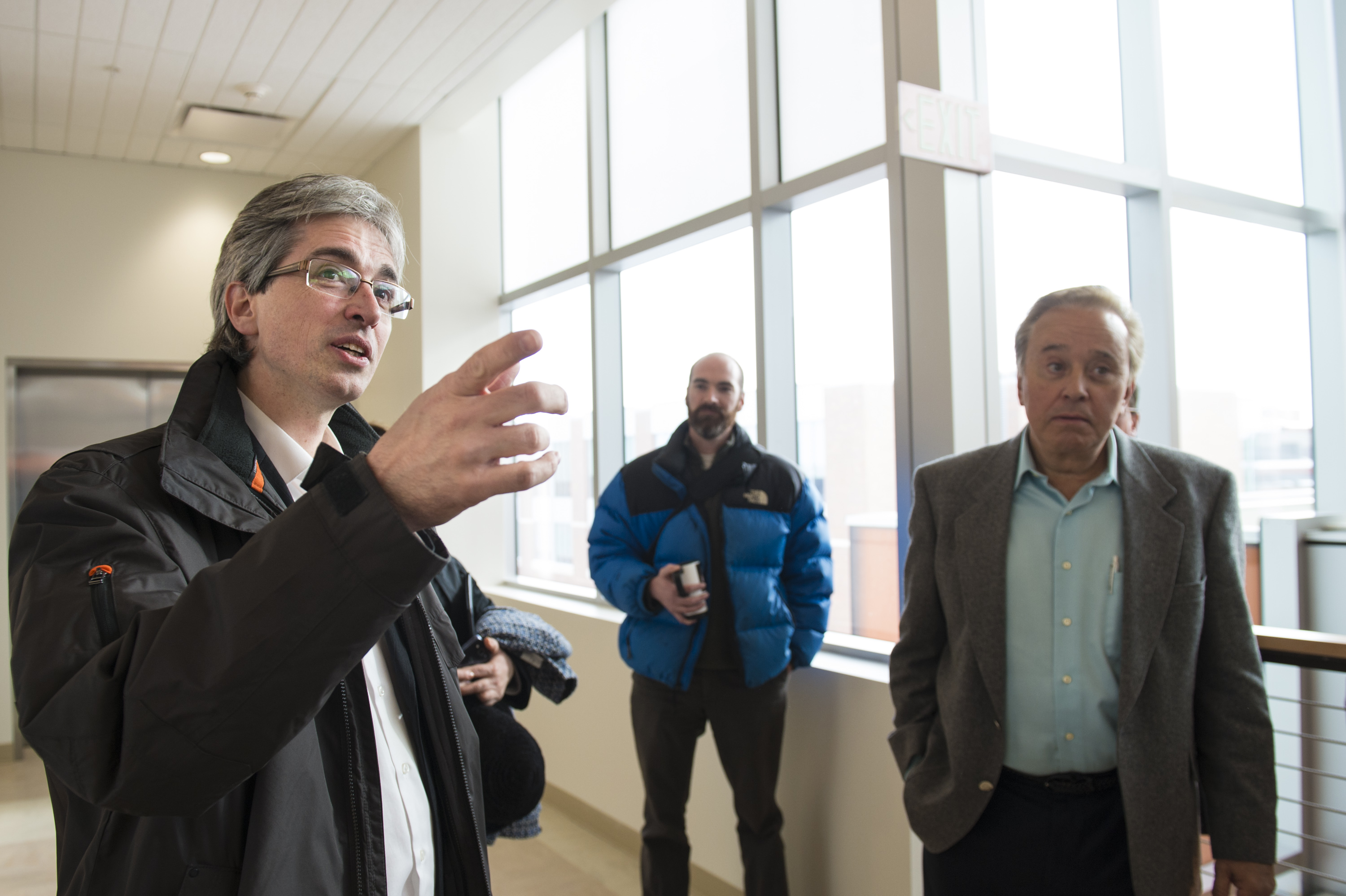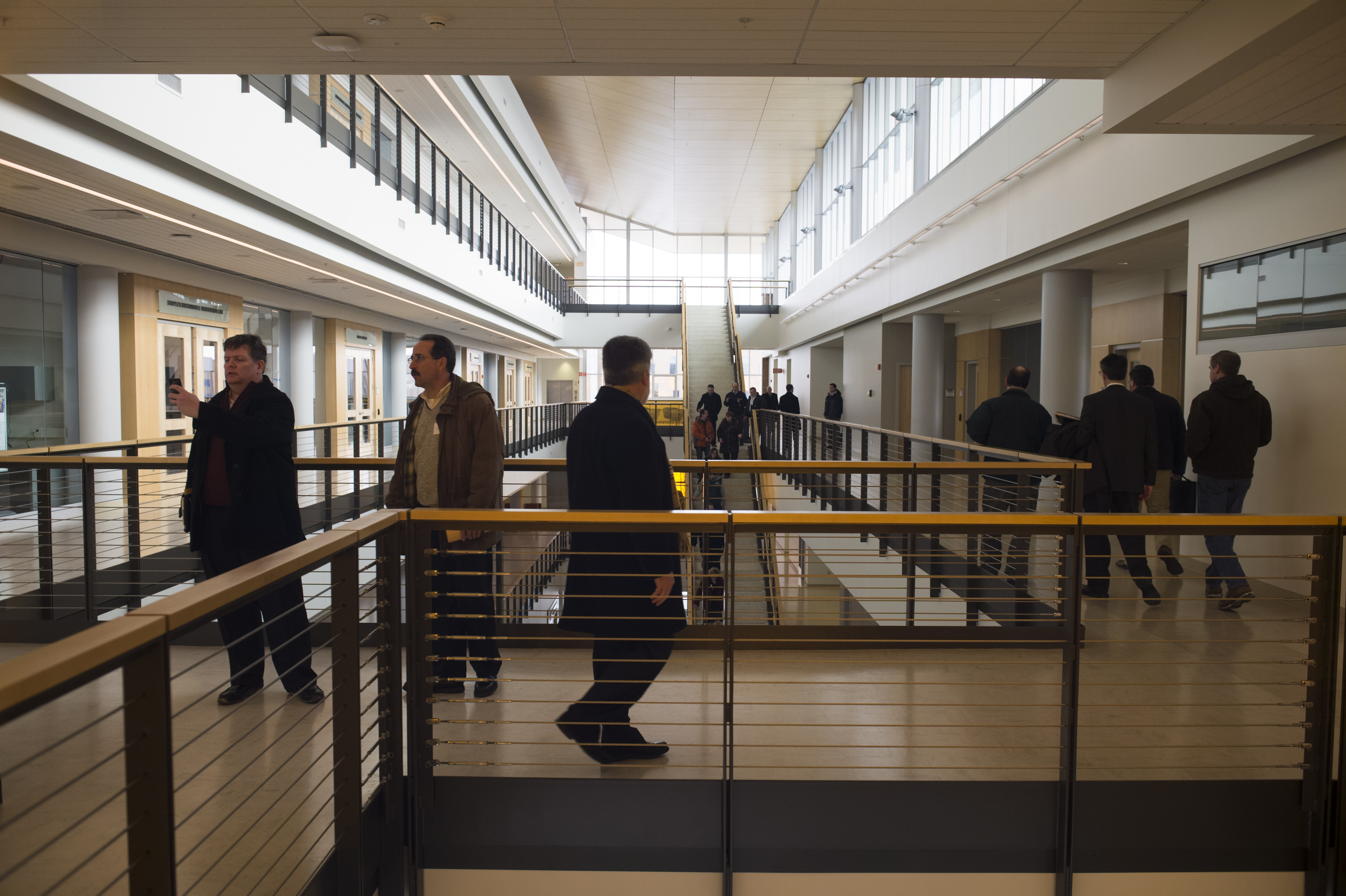Various professors, sustainability directors and architects from colleges in the Northern New York region came together to discuss and learn about the sustainability efforts at this year’s sustainability conference, held January 29. Representatives from colleges including Cornell University, Monroe Community College (MCC) and RIT attended the event to answer questions and to talk about their goals to improve the quality of their campuses.
The conference started with an introduction from David J. Beinett, president of SWBR Architects, the firm that designed and created the Golisano Institute of Sustainability. Beinett discussed the growth of the conference from its beginning as a single table of representatives to a full room of designers and directors. He encouraged the people in the room to network and support each other as architects and designers for future sustainability efforts.
Following Beinett was keynote speaker Tracie Hall, executive director of the U.S. Green Building Council (USGBC)’s New York Upstate Chapter. She discussed what people can do to improve suitability education in the region, specifically stressing awareness, advocacy and education. Her goal is to have students, construction workers and even anyone not directly involved with LEED certified buildings to be much more knowledgeable about sustainability education programs. “ [The students] are the next generation of green leaders, and whether they choose to embrace it is really important,” said Hall.
Today, 25 percent of all green projects in northern New York are being done within higher education. Including sustainably into master plans, cutting down waste and reducing energy is just a small list of current accomplishments made on these college campuses and in other communities. However, Hall stressed that in order for people to understand the importance of these accomplishments, they must first be made aware of them. Some schools she had visited had saved thousands of dollars due to their efforts, yet only a small percentage of students and faculty were aware of this.
After the keynote, a panel was held with four representatives from different colleges to discuss their campuses’ suitability efforts. They also discussed the concept of a “living laboratory” — a space where research and innovation are motivated by the involvement of the outside community. The Golisano Institute of Sustainability (GIS) is an example such a concept. The panel consisted of RIT’s Senior Sustainability Advisor Enid Cardinal, Associate Provost and Director of GIS Dr. Nabil Nasr, Director of Planning at MCC Valarie Avalone and Director of Energy Management at Cornell University William Severn Joyce.
The four representatives discussed their green efforts and the challenges they faced with their projects. Avalone talked about her issues with money, coming from a community college, and how she found economical ways to design MCC’s buildings to LEED certification standards. Cardinal talked about the recent green container change in Gracie’s and the GIS building. She cited Cornell as a leading example for any school interested in sustainability. Even at private schools, getting funds for these projects is not easy and often means singing up for grants and requesting donations.
Those who are not architects, scientists or building designers still have a place in a greener earth. The entire process outside of creation such as advocacy, education and business all contribute to the efforts being done for sustainability. “It’s not about the plaque on the wall; it’s not just about the points; it’s about the opportunity to provide the optimal learning environment [and the] optimal teaching environment for your college or university,” said Hall.




